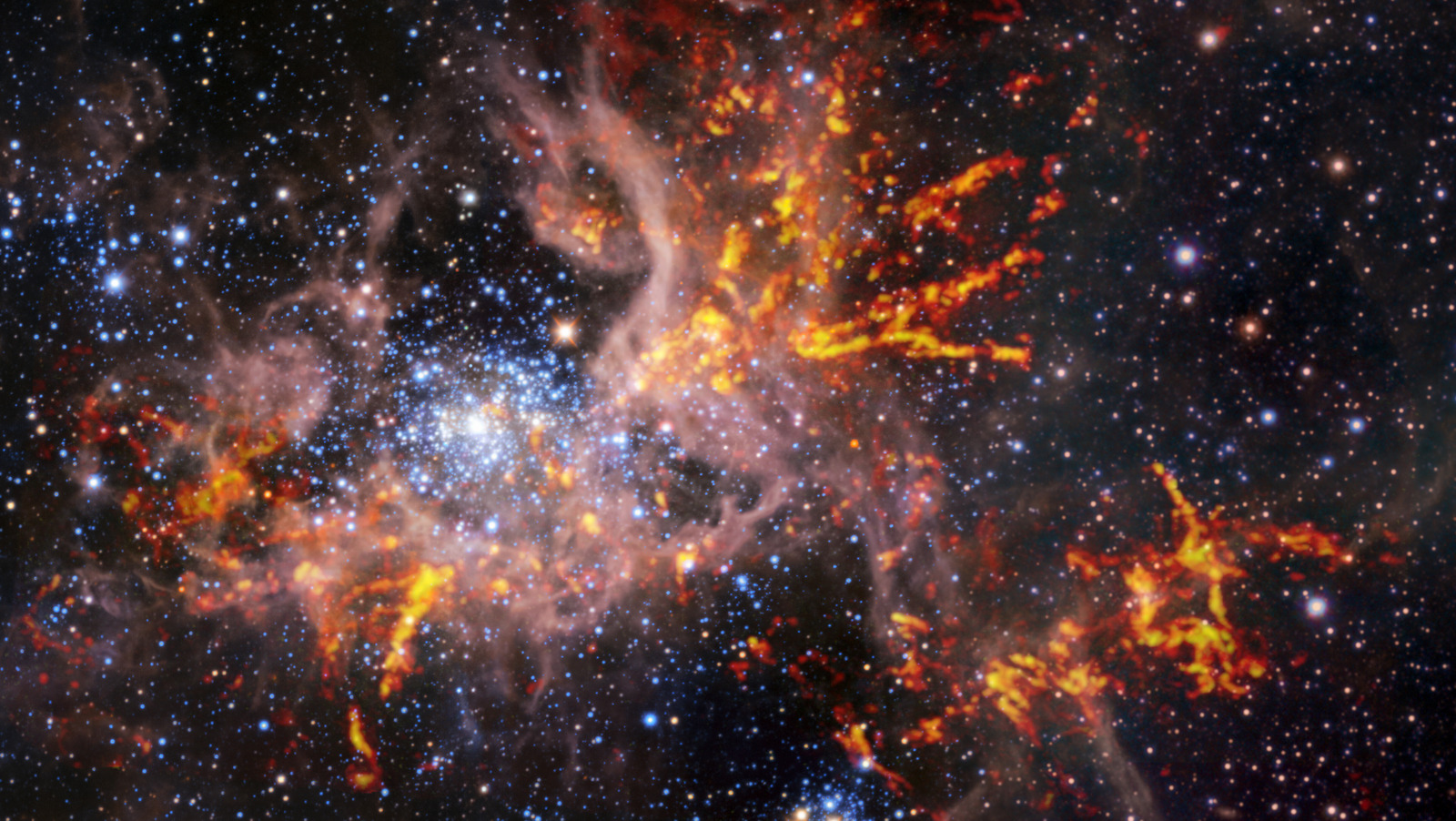
Stars are born when clouds of dust and gas form into clumps, and these clumps attract more material because of their gravity. Eventually, when enough material has fused together, the knot collapses under its own gravity and gets hot, becoming a protostar. This becomes the core of a star, which evolves from it (via NASA).
That’s why nebulae, which are clouds of dust and gas, are often hotbeds of star formation. But it’s not only the case that nebulae create stars – the stars which are born can affect the structure of a nebula in turn as well.
In the case of the Tarantula Nebula, the researchers mapped the cold gas of the nebula to see how it was affected by star formation. According to ESO, the images, which combine the ALMA radio data overlaid over previous infrared observations from the European Southern Observatory’s Very Large Telescope and ESO’s Visible and Infrared Survey Telescope for Astronomy, show wisps of gas which are likely the remnants of star formation.
The spidery shape of the Tarantula Nebula’s gas clouds show cold, dense gas that has the potential to collapse and form new stars, according to the data collected by ALMA (via ESO).
Stay connected with us on social media platform for instant update click here to join our Twitter, & Facebook
We are now on Telegram. Click here to join our channel (@TechiUpdate) and stay updated with the latest Technology headlines.
For all the latest Gaming News Click Here
